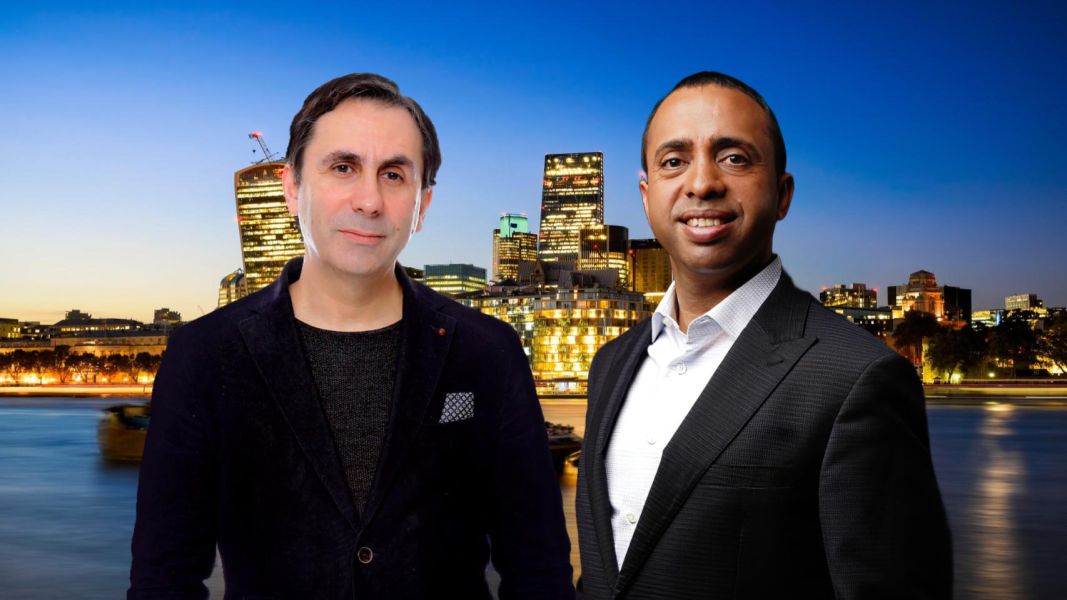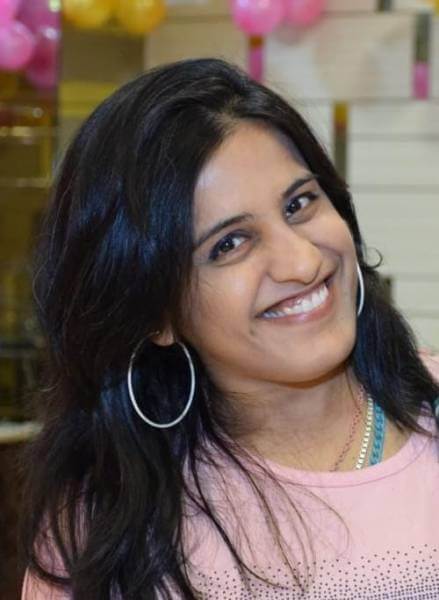Dinis Guarda interviews Pradeep Goel, CEO of Solve.Care in his series of YouTube Podcasts. In this episode, they discussed the transformative potential of blockchain in healthcare. The podcast is powered by Businessabc.net and citiesabc.com.

Pradeep Goel is the CEO of Solve.Care, is a healthcare blockchain company working to improve patient care networks. With nearly 30 years of experience in blockchain, finance, technology, and healthcare, Pradeep has held top roles such as CEO, COO, CIO, and CTO across various insurance, technology, and healthcare organisations. He co-founded four healthcare IT companies, including EngagePoint and Dakota Imaging (later acquired by WebMD), which were repeatedly featured in Deloitte’s Technology Fast 500 and INC500/5000 lists. Pradeep played a key role in US healthcare projects during the Bush and Obama administrations, helping to design solutions for programs like Medicaid and the Children’s Health Insurance Program. Recognised by Goldman Sachs as one of the ‘100 Most Promising Entrepreneurs’, he holds a B.E. in Systems Engineering from the University of Punjab. Pradeep’s goal is to use technology to make healthcare better and more accessible.
“We built exactly the platform where Fair Equitable transparent symmetric balanced networks can be achieved and where the roles and responsibilities of each participant can be published and protected and they don’t rely upon the Goodwill of a central Authority honouring their contract with that number of works”, Pradeep tell Dinis.
“Healthcare it is very fundamental is a network problem and what I mean by that is Healthcare is never a solo sport I don’t get to take care of my health by myself so there’s always going to be a team and that team needs to collaborate and that collaboration is determined based on my need and regulation payment and many other factors but in the end it’s a coordination and collaboration program which requires people to effectively network with each other now there are a lot of challenges with achieving an effective Healthcare Network in the general sense because you have regulatory issues data issues skill issues access issues so of course you can have a challenge when you need to collaborate so many people effectively around care of a patient you need a very effective networking tool and those tools don’t really exist I mean you have a lot of efforts done to make this network function better many much technology has been devoted to making these networks work better but there is no real solution in making this network fair and efficient so so far what we have pre- blockchain pre web3 world are these networks are built by organizations or institutions to optimize their business processes and you are supposed to fit that Network and if you don’t well you’re going to suffer accordingly”, said Pradeep.
The Role of Blockchain in Healthcare
Blockchain’s immutable and decentralised nature provides an ideal framework for addressing the complexities of healthcare networks. Goel highlighted that traditional healthcare systems are often centralised and fragmented, leading to inefficiencies and a lack of trust among stakeholders. Blockchain, by contrast, offers a secure and transparent way to manage interactions and transactions within healthcare networks.
“Let’s say you the patient and somebody else is a specialist have very unique rights we control our data sets we every transaction we do with each other gets written to the chain in a way that without exposing my Identity or the content of the transaction we have a record that a referred B to C C sent an appointment to b b went and did the appointment and then C notified a what happened that event Ledger is on the Chain but you cannot tell who a is who B is who C is and what they really talked about that’s data that’s not on the Chain that’s anchored to the chain so this way the blockchain enforces the right behavior and tracks the right Behavior but doesn’t expose the identity of the data of the participants of the network this is one very clear use case of blockchain and I will say this again the one of the common I’ve said this many times just a sidebar you know there are many blockchains that deal with data with patient data data management platform data aggregation platform data collection it’s all fine that’s a good use case where it makes sense but in my mind those chains are going to be by definition very narrow in their scope because they have to live inside the the compliance framework of whichever country they’re running in and it’s really hard to see how you can have a global medical record chain and be compliant with every country’s laws so our view is that solve care as a blockchain is never going to be the data management chain we’re going to be the data consumption we’ll consume our Network participants can consume the data on whatever chain they haveit but ourselves we are focused on facilitating these networks so we kind of like a Marketplace platform which enables these very complex transparent and and governed and compliant Network s or marketplaces you can use them interchangeably to drive better coordination and outcome of healthcare and we let the data management of patient data in the hands of others who which is a which is in some sense a simpler problem and a more complex problem so we will work with any data chain out there that is credible and compliant in the region that they operate but we as a platform are much broader than that our vision is to enable more symmetric Equitable”, Pradeep Goel explained Dinis
The Care Wallet and Blockchain Integration
At the heart of Solve.Care’s solution is the Care Wallet, a digital interface that allows users to access a variety of healthcare services. The platform uses blockchain to decentralise healthcare networks, enabling direct peer-to-peer interactions without the need for centralised intermediaries. This system ensures that all transactions and data exchanges are recorded on the blockchain, providing a transparent and reliable framework for healthcare management.
“I’m going to find content that I want to see so all you need to know is where to go and then the whole backend website is presented to you you don’t really care whether the website is built on PHP or Java or you know Ruby on Rails or python so many Technologies on which you can build the website but all you want to do is to go to an address and browse the site so I think most Humanity today knows that browser gets me to an address I put in the address I go see the content so it to apply that same Paradigm to healthcare we said you should be able to choose the site you want to browse or or choose the network you want to join based on your Healthcare needs so whether if I have risk to diabetes then maybe I want to search for networks that deal with diabetes and join those networks kind of like joining an Instagram feed or a LinkedIn you know group to say I want to focus on this content but instead of just reading some website page what you get in the wallet are actually cards deck of cards and these cards are applications they’re not some static pages right think of it as a much more advanced internet where and as we know you can go to websites and do a lot of things you can go to schwab.com and trade stocks so similarly you can go into the Right Care Network on the care wallet and buy medicine or or find a Specialist or get a second opinion on your MRI or you know compare the risks of taking this drug so those are different networks that serve different purposes and you just join the right Network and you will interact with the network using cards the network will publish the cards they let you do something so I might and the card can do anything so card is the app which appears when you join the network and it appears in your wallet and using that card you can interact with other parties you could request for an appointment or get an appointment or refer a patient or get a referral from a doctor as long as I’m in the same network as the patient”, said Pradeep Goel.
Concluding the interview Dinis asked Pradeep Goel, “How do you see this part of the AI in one as a possible solver of all these issues around human Healthcare and human well-being but as well as a potential kind of new evolutionary part of humanity.”
Pradeep replied to Dinis “we are living this time of stipends and sometimes scary change and you know typically when technology comes around we we have a class of people who feel that they have this technology well under control and they’ll be to harness that for the benefit of humanity and there are some scary Technologies nuclear you know Tech is that kind of a tech you hope that experts know how to control it and manage it and deploy it because otherwise it could destroy Humanity AI is scary in that it’s not clear if people who are building the tech and are talking about commercializing this Tech know how to control it and then that’s a really scary part but that’s a different conversation AI as it is you know we are mostly familiar with it through chat GPT before that you know we knew of natural language learn NLP and machine learning but really how human beings think of AI is this you know generative AI the the the the large language model AI now that large language model is you know by definition large language it’s try is trained on everything under the sun all publicly available data even if it was my I I wrote that blog or you or the blog is trained on everything kind of like Google can search everything so there it’s a more foundational technology”
“AI has to follow that same model and I believe companies like softare and many others but our vision is clear we are going to bring AI to the patient in the context of their data in their control relevant to their risk conditions only accessible to the patient so I’m all for you know that the third stage of AI and we are plotting our way to get there in a way that respects the patient and puts the patient first so that’s where we are but there’s a lot of steps between now and then you know how do we achieve how do we you know this in AI you have these things called hyper parameters you have things called rags and these are all very important as to who’s controlling and setting these parameters because clinical you know and training of AI model is going to have a lot of built-in specialty bias so for example how you treat diabetes in India is going to be slightly different than how you treat diabetes in the US and that is going to get built into these into the model so we will need to be very careful about whose model are we using this three diabetic models are not going to be the same so we will need ranking and rating and evaluation so we think about all that but ultimately even if we build and agree to a good diabetic model for each region how do I apply to the human who Health we are interested in that’s the last and final step and that’s when AI becomes I think in my mind relevant to healthcare and Humanity”, He added.

With a driving passion to create a relatable content, Pallavi progressed from writing as a freelancer to full-time professional. Science, innovation, technology, economics are very few (but not limiting) fields she zealous about. Reading, writing, and teaching are the other activities she loves to get involved beyond content writing for intelligenthq.com, citiesabc.com, and openbusinesscouncil.org



























